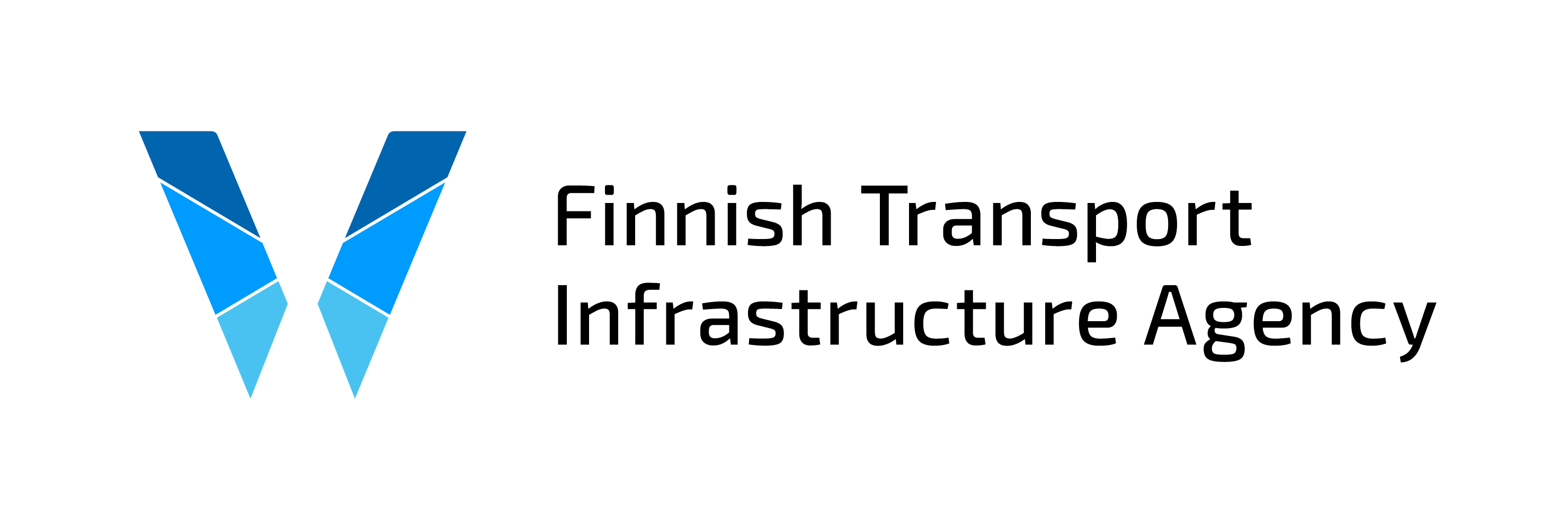Information package on winter road maintenance
Published 5.11.2020 10.00
The Finnish Transport Infrastructure Agency and the Centres for Economic Development, Transport and the Environment (ELY Centres) invest in winter maintenance especially on busy roads.
Last winter was exceptional. In the south, there was hardly any snow at all, but in northern Finland, the heaps of snow broke records. What will this winter be like?
“Finnish winters vary, but a typical winter includes mild weather, severe frost and anything in between,” says Otto Kärki, Head of Unit, Maintenance Steering and Development at the Finnish Transport Infrastructure Agency.
The responsibility for the maintenance of state-owned roads belongs to the Finnish Transport Infrastructure Agency and the ELY Centres. The Finnish Transport Infrastructure Agency is in charge of the policies and consistency of winter maintenance. ELY Centres tender out and conclude contracts and supervise works.
The first winter maintenance measure visible to road users is the appearance of snow ploughing signs along roads. And when the winter finally comes, the maintenance staffs plough snow, salt or grit roads and level icy road surfaces. The service level of winter maintenance depends on which winter maintenance category the road belongs to. A new contract model has been introduced to enhance quality.
“For example, in 2019, the Finnish Transport Infrastructure Agency raised the maintenance categories of busy roads in particular. We immediately received positive feedback on this from road users,” Kärki says.
Better quality winter maintenance for many roads
The higher maintenance categories increased the quality requirements on many roads and imposed stricter implementation times for maintenance measures. The change was related to the new winter maintenance guidelines. The new guidelines are applied to all main roads and to about 40% of the contracts covering the entire road network. The new tightened quality requirements are introduced as the contracts are renewed, so that they will be included in the rest of the contracts within 2021–2023.
The higher maintenance categories do not, however, mean that the prioritisation of maintenance could be abandoned. The highest winter maintenance categories are used for the main roads, as two thirds of all road transport use these roads. Roads with lower traffic volumes are also maintained, but the implementation times of measures are longer, and the quality requirements are lower.
“On low-traffic roads, during, for example, a snowstorm, the road conditions can be problematic for several hours, which means that extra caution must be taken when driving. Snow may be packed into ridges, which are called ‘packed snow’. Unfortunately, it is not economically feasible to keep all roads clear of snow or even to keep their surfaces completely level,” says Kärki.
How well winter maintenance succeeds will also be largely affected by the weather conditions of the coming winter.
“Antiskid treatment is more difficult and more of it needs to be applied when the temperature is around zero degrees. From the perspective of road maintenance, a winter with proper subzero temperatures may sometimes be easier than a mild winter,” Kärki says.
Particularly if driving in poor weather conditions in winter, drivers should not forget sufficient safety distances, appropriate speed and general caution.
Five points of winter road maintenance
1) To the extent possible, slipperiness is prevented by taking proactive measures. Road salting often takes place in the evening and at night, and sufficient friction on roads covered with packed snow is maintained by means of roughening and gritting road surfaces.
2) The busiest roads are ploughed first. The aim is that on busy roads and on pedestrian or cycling routes there should be no more than a few centimetres of snow.
3) On busy roads, antiskid treatment involves salting, while on other roads the icy surface is gritted or roughened instead.
4) You can give feedback on winter maintenance. You can send your feedback through, for example, the Feedback Channel: https://palautevayla.fi/aspa?lang=en
5) Up-to-date information on driving conditions and winter maintenance is available in the Traffic Situation service. In the service, you can find, for example, road condition cameras and information on when winter maintenance measures have been carried out on the road. You can find the service at https://liikennetilanne.tmfg.fi/
Further information
Need more detailed information on winter maintenance? Visit the Finnish Transport Infrastructure Agency website: https://vayla.fi/en/maintenance/road-network/winter-maintenance
Otto Kärki, Head of Unit,
Maintenance Steering and Development,
Finnish Transport Infrastructure Agency,
tel. +358 (0)29 534 3330
[email protected]
This is an old article. It may contain deprecated information and the links may not work. Our publications can be found in the Doria publication archive
